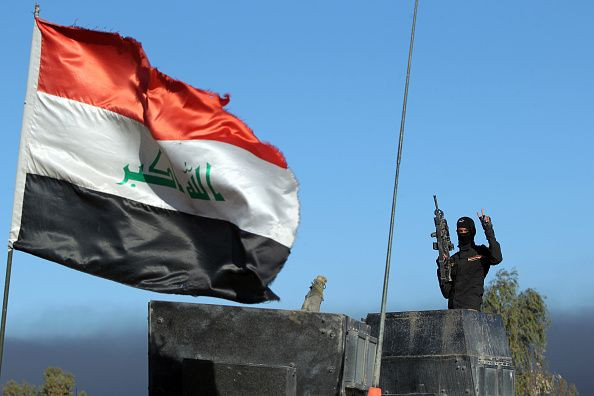Battle For Ramadi: Iraqi Troops Close In On Final ISIS Fighters Left In City, But Face Stiff Resistance

Iraqi forces fighting the Islamic State group for control of the centrally located city of Ramadi were in the midst Thursday of a battle against the last members of the terror group, who were barricaded in the city’s former government headquarters. Determined ISIS resistance slowed government forces while explosive devices placed around the city and trapped civilians had also given troops cause for concern.
Should government forces capture the city it would be both a strategic and symbolic win for the Iraqi army, which had lost the city just seven months prior. It would also represent a launching point to take the ISIS-held city of Fallujah to the east of Ramadi.
"The Iraqi forces are in Hoz neighborhood ... about 500 meters (546 yards) away from the governmental complex," an army lieutenant colonel told Agence France-Presse from Anbar province.
Most intensive @RoyalAirForce airstrikes day #DefeatingDaesh & support to ops in #Ramadi - https://t.co/je7tKihTJM pic.twitter.com/LhCnDaz9F7
— Ministry of Defence (@DefenceHQ) December 23, 2015
Iraqi forces were struggling to dislodge a group of around 100 ISIS fighters because of the configuration of the land, the colonel told AFP. "Because of the restrictive nature of the terrain, it's difficult to mass combat power. It's easy for a small number of people to hold a large number of people off," he said, noting the 100 ISIS fighters had positioned themselves on the approach road to the government complex.
The area is known as a chokepoint or bottleneck in military tactics, forcing Iraqi troops to pass through a small corridor to get to the government building. ISIS, on the other hand, would only need to defend the small opening that leads into the compound. While this is good for the defending group, it also makes it more difficult to escape.
"There's stiff resistance, there's been fierce fighting over the last 24 hours in the southern part of Ramadi city," said Col. Steve Warren, the spokesman for the U.S.-led coalition. "They've established a strong defense using improvised explosive devices as mine fields, booby traps, rigging entire houses to explode.”
© Copyright IBTimes 2024. All rights reserved.






















